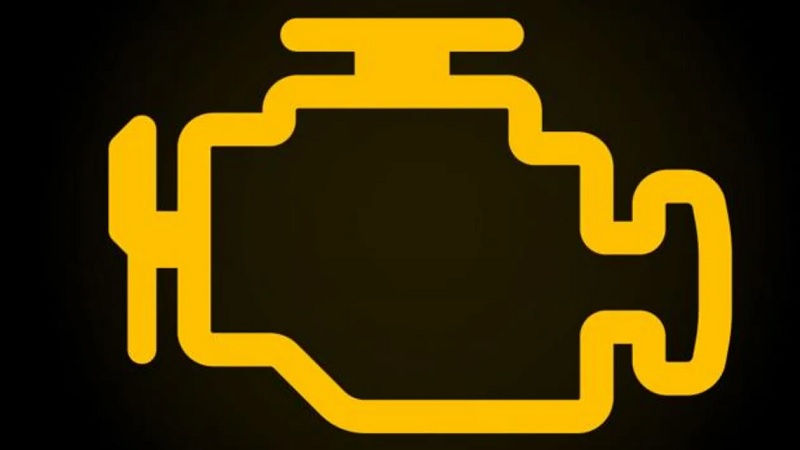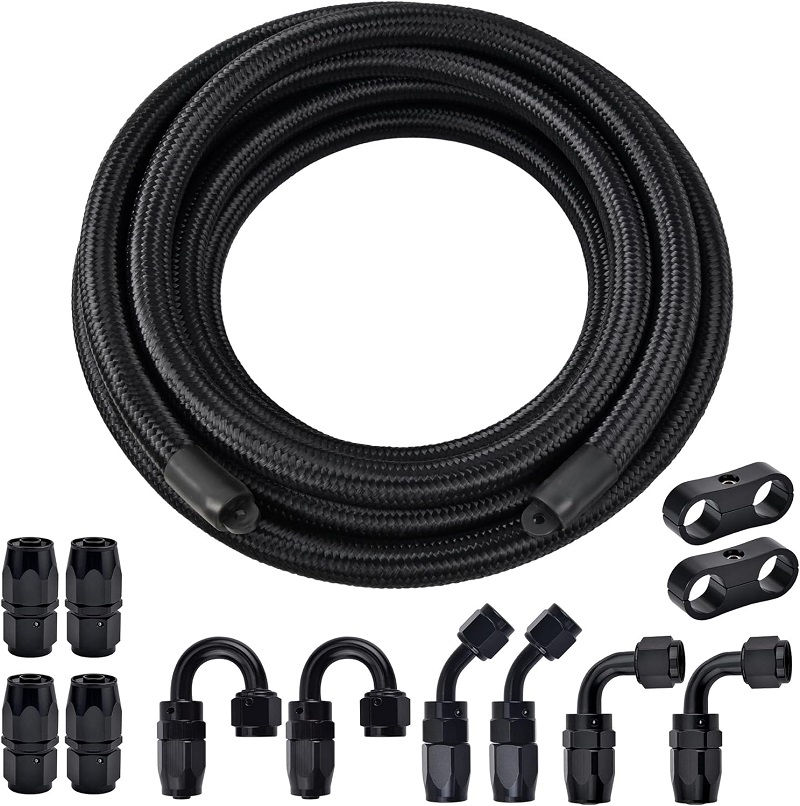This post contains affiliate links. This means I will make a commission at no extra cost to you should you click through and make a purchase [ “As an Amazon Associate, I earn from qualifying purchases.” ]. Read the full disclosure here.
Engine Light on Car Shaking GuideMechanic.Com Is your car’s engine light on and accompanied by unsettling shaking? Don’t panic just yet.
This comprehensive guide will help you understand the possible causes, diagnose the issue, and provide effective solutions to get your car back on the road smoothly.
When the engine light illuminates and your car starts shaking, it can be a worrisome experience. However, it’s essential to approach the situation with a calm and analytical mindset.
This article will walk you through the various reasons behind engine light and car shaking occurrences, enabling you to take the necessary steps to resolve the issue.
Understanding the Engine Light

Before delving into the causes of engine light on car shaking, it’s crucial to comprehend the purpose and function of the engine light itself.
See Also: Car Problem Symbols [ Causes & Diagnosis ]
The engine light, also known as the check engine light, is an indicator on your vehicle’s dashboard that alerts you to potential issues with the engine or associated systems.
When this light comes on, it means that the onboard computer system has detected a problem and stored a corresponding error code.
When it comes to engine light on car shaking, it’s essential to understand that the shaking itself is not directly caused by the engine light.
Instead, the shaking is a symptom of an underlying problem that the engine light is warning you about. The engine light acts as a signal that something is amiss with your vehicle and requires attention.
Whether the engine light is solid or flashing can provide additional insights. A solid engine light typically indicates a less severe issue that requires attention but does not require immediate action.
On the other hand, a flashing engine light suggests a more urgent problem that needs immediate attention to prevent further damage to the engine or catalytic converter.
Common Causes of Engine Light On Car Shaking
There are several potential causes for engine light on car shaking. Understanding these causes will help you narrow down the possibilities when diagnosing the problem. Here are some of the most common culprits:
1. Fuel System Issues

A problematic fuel system can trigger both the engine light and car shaking. One possible cause is a clogged fuel filter, which restricts the flow of fuel to the engine.
This can result in poor combustion, leading to engine misfires and subsequent shaking. Another potential issue is a faulty fuel injector, which may not be delivering the correct amount of fuel to the engine cylinders, causing an imbalance and resulting in shaking.
See Also: 4L60E Bellhousing
Additionally, a malfunctioning fuel pump can lead to inadequate fuel pressure, affecting engine performance and causing the car to shake.
2. Ignition System Problems
The ignition system plays a crucial role in a car’s smooth operation. If there are issues with the ignition system, it can cause the engine to misfire and result in shaking.
One common problem is faulty spark plugs, which can lead to incomplete combustion in the engine cylinders. This can cause the engine to run rough and result in shaking.
Another potential issue is a malfunctioning ignition coil, which is responsible for providing the spark needed to ignite the fuel-air mixture in the cylinders.
If the ignition coil is not functioning properly, it can lead to misfires and shaking. Ignition timing problems, such as a misaligned timing belt or a faulty crankshaft position sensor, can also cause engine light on car shaking.
3. Engine Component Failures
Various engine components can malfunction and trigger the engine light while causing your car to shake. One such component is the oxygen sensor, which measures the amount of oxygen in the exhaust gases.
A faulty oxygen sensor can disrupt the air-fuel mixture, leading to rough engine operation and shaking. Another critical component is the mass airflow sensor, which measures the amount of air entering the engine.
If the mass airflow sensor is faulty or dirty, it can cause an incorrect air-fuel mixture, resulting in engine misfires and shaking.
Additionally, a malfunctioning throttle body, which regulates the airflow into the engine, can disrupt the engine’s smooth operation and cause shaking.
Diagnosing the Problem: Steps to Take
When faced with an engine light on car shaking situation, it’s crucial to diagnose the problem accurately to implement the appropriate solutions. Here are the steps you should follow:
1. Check for Error Codes
The first step in diagnosing the issue is to retrieve the error codes stored in the vehicle’s onboard computer system. You can do this by using a diagnostic scanner or code reader.
These devices connect to the vehicle’s onboard diagnostics (OBD) port and retrieve the error codes. The error codes will provide valuable information about the specific problem detected by the computer system. Write down the error codes for reference during the diagnostic process.
2. Inspect Physical Components
Next, visually inspect the engine and its components for any visible signs of damage or wear. Check for loose or disconnected hoses, damaged wires, or worn-out belts.
Pay attention to any leaks, unusual noises, or unusual smells. Physical inspection can help identify obvious issues that may be contributing to the engine light on car shaking problem.
3. Use Diagnostic Tools
In addition to retrieving error codes, diagnostic tools such as a multimeter or oscilloscope can help you further analyze the vehicle’s systems.
These tools can measure electrical signals, voltage levels, and sensor outputs, providing more detailed information about the condition of various components.
4. Perform System Tests
Depending on the specific problem indicated by the error codes and diagnostic tools, you may need to perform system tests to gather more data.
See Also: Chrysler 300 Catalytic Converter
These tests may involve checking the fuel pressure, performing a compression test, or using a smoke machine to detect vacuum leaks. System tests can help confirm or rule out potential causes and provide valuable information for further troubleshooting.
Fuel System Issues
Check out this EVIL ENERGY 6AN Fuel Line Kit, 6AN Nylon Braided Fuel Line Hose Fitting Kit CPE 20FT Black(0.34inch ID)

A problematic fuel system can cause engine light on car shaking. Here are some of the fuel system issues that you may encounter:
Clogged Fuel Filter
A clogged fuel filter restricts the flow of fuel to the engine. Over time, dirt, debris, and contaminants can accumulate in the fuel filter, causing it to become clogged.
When the fuel filter is clogged, it can disrupt the fuel flow, resulting in poor combustion and engine misfires. These misfires can cause the car to shake.
Faulty Fuel Injectors
Fuel injectors are responsible for delivering fuel to the engine cylinders in a precise and controlled manner.
If a fuel injector is faulty, it may not be able to deliver the correct amount of fuel or may spray the fuel in an irregular pattern. This can lead to an imbalance in the combustion process, causing engine misfires and shaking.
Malfunctioning Fuel Pump
The fuel pump is responsible for delivering fuel from the tank to the engine. If the fuel pump is malfunctioning, it may not be able to maintain adequate fuel pressure. Insufficient fuel pressure can affect the engine’s performance, resulting in engine misfires and shaking.
Summary:
Fuel system issues such as a clogged fuel filter, faulty fuel injectors, or a malfunctioning fuel pump can disrupt the fuel flow and lead to engine misfires and shaking. It is crucial to address these issues promptly to ensure proper engine performance.
Ignition System Problems
The ignition system is integral to the smooth operation of the engine. Here are some ignition system problems that can cause engine light on car shaking:
Faulty Spark Plugs
Spark plugs play a vital role in igniting the fuel-air mixture in the engine cylinders. Over time, spark plugs can wear out or become fouled, resulting in weak or inconsistent sparks. This can lead to incomplete combustion, engine misfires, and shaking.
Malfunctioning Ignition Coil
The ignition coil is responsible for generating the high voltage needed to create a spark at the spark plugs.
If the ignition coil is malfunctioning, it may not be able to provide a strong enough spark, leading to engine misfires and shaking.
Ignition Timing Issues
Ignition timing refers to the precise timing of the spark plug firing in relation to the position of the engine’s pistons.
If the ignition timing is off, it can disrupt the combustion process, leading to engine misfires and shaking. Ignition timing issues can be caused by a misaligned timing belt or a faulty crankshaft position sensor.
Summary:
Ignition system problems, such as faulty spark plugs, a malfunctioning ignition coil, or ignition timing issues, can result in engine misfires and shaking. It is crucial to address these issues promptly to ensure smooth engine operation.
Engine Component Failures
Various engine components can malfunction and trigger the engine light while causing your car to shake. Here are some of the common failures:
Faulty Oxygen Sensor
The oxygen sensor measures the amount of oxygen in the exhaust gases. It provides feedback to the engine control unit (ECU) to adjust the air-fuel mixture for optimal combustion.
If the oxygen sensor is faulty, it may provide incorrect readings, leading to an imbalanced air-fuel mixture. This can result in rough engine operation and shaking.
Malfunctioning Mass Airflow Sensor
The mass airflow sensormeasures the amount of air entering the engine. It provides crucial data to the engine control unit to calculate the correct amount of fuel to be injected.
If the mass airflow sensor is faulty or dirty, it may not accurately measure the airflow, leading to an incorrect air-fuel mixture. This can cause engine misfires and shaking.
Disrupted Throttle Body
The throttle body regulates the airflow into the engine. If the throttle body is malfunctioning or dirty, it may not open or close properly, affecting the engine’s smooth operation. A disrupted airflow can lead to engine misfires and shaking.
Failed EGR Valve
The Exhaust Gas Recirculation (EGR) valve recirculates a portion of the exhaust gases back into the combustion chambers to reduce nitrogen oxide emissions.
If the EGR valve gets stuck in the open or closed position, it can disrupt the combustion process, leading to engine misfires and shaking.
Summary:
Engine component failures, such as a faulty oxygen sensor, malfunctioning mass airflow sensor, disrupted throttle body, or failed EGR valve, can cause engine misfires and shaking. It is important to address these component failures to restore smooth engine operation.
Diagnosing the Problem: Steps to Take
When faced with an engine light on car shaking situation, it is important to accurately diagnose the problem to implement the appropriate solutions. Here are the steps you should follow:
1. Check for Error Codes
Using a diagnostic scanner or code reader, retrieve the error codes stored in the vehicle’s onboard computer system.
See Also: 2012 Buick Enclave Problems
Error codes provide valuable information about the specific problem detected by the computer system. Write down the error codes for reference during the diagnostic process.
2. Inspect Physical Components
Visually inspect the engine and its components for any visible signs of damage or wear. Check for loose or disconnected hoses, damaged wires, or worn-out belts.
Pay attention to any leaks, unusual noises, or unusual smells. Physical inspection can help identify obvious issues that may be contributing to the engine light on car shaking problem.
3. Use Diagnostic Tools
In addition to retrieving error codes, diagnostic tools such as a multimeter or oscilloscope can provide more detailed information about the condition of various components.
These tools can measure electrical signals, voltage levels, and sensor outputs, helping you gather more data for accurate diagnosis.
4. Perform System Tests
Depending on the specific problem indicated by the error codes and diagnostic tools, you may need to perform system tests to gather more data.
These tests may involve checking the fuel pressure, performing a compression test, or using a smoke machine to detect vacuum leaks.
System tests can help confirm or rule out potential causes and provide valuable information for further troubleshooting.
Implementing Solutions for Engine Light On Car Shaking
Now that you have identified the potential causes of engine light on car shaking, it’s time to implement the appropriate solutions. Here are some remedies to consider:
1. Address Fuel System Issues
If fuel system issues, such as a clogged fuel filter, faulty fuel injectors, or a malfunctioning fuel pump, are causing the engine light on car shaking, addressing these problems is crucial.
Replace the clogged fuel filter, clean or replace faulty fuel injectors, or repair or replace the malfunctioning fuel pump. Ensuring a clean and efficient fuel system will help restore smooth engine operation.
2. Resolve Ignition System Problems
If ignition system problems, such as faulty spark plugs, a malfunctioning ignition coil, or ignition timing issues, are contributing to the engine light on car shaking, take the necessary steps to resolve these issues.
Replace worn-out spark plugs, repair or replace the malfunctioning ignition coil, and ensure proper ignition timing. A well-functioning ignition system is essential for smooth engine operation.
3. Address Engine Component Failures
Engine component failures, such as a faulty oxygen sensor, malfunctioning mass airflow sensor, disrupted throttle body, or failed EGR valve, require appropriate solutions.
Replace the faulty oxygen sensor or mass airflow sensor, clean or repair the disrupted throttle body, or replace the failed EGR valve. Proper functioning of these engine components is crucial for optimal engine performance.
4. Perform Regular Maintenance
Prevention is always better than cure. To minimize the chances of encountering engine light on car shaking situations, perform regular maintenance on your vehicle.
This includes regular oil changes, air filter replacements, spark plug replacements, and fuel system cleanings. Regular maintenance helps keep your vehicle in good condition and prevents potential issues from arising.
5. Seek Professional Help
If you are unsure about diagnosing or resolving the engine light on car shaking problem, it is always recommended to seek professional help.
A certified mechanic or automotive technician has the expertise and specialized tools to accurately diagnose and repair the issue. Professional assistance can save you time, money, and further complications.
Conclusion
Experiencing engine light on car shaking can be distressing, but armed with the knowledge gained from this article, you are now equipped to tackle the issue head-on.
By understanding the causes, accurately diagnosing the problem, and implementing the appropriate solutions, you can ensure a smooth and worry-free driving experience.
Remember to address fuel system issues, resolve ignition system problems, and address engine component failures.
See Also: Vehicle Warning Symbols – Possible Causes and Troubleshooting
Additionally, perform regular maintenance and seek professional help when needed. With these steps, you can confidently overcome engine light on car shaking situations and enjoy the reliability and performance of your vehicle.
Related video of Understanding Engine Light on Car Shaking: Causes, Diagnosis, and Solutions
- Custom Lifted Diesel Trucks for Sale - December 20, 2025
- New Lifted Diesel Trucks for Sale - December 19, 2025
- Old Lifted Diesel Trucks for Sale - December 18, 2025

